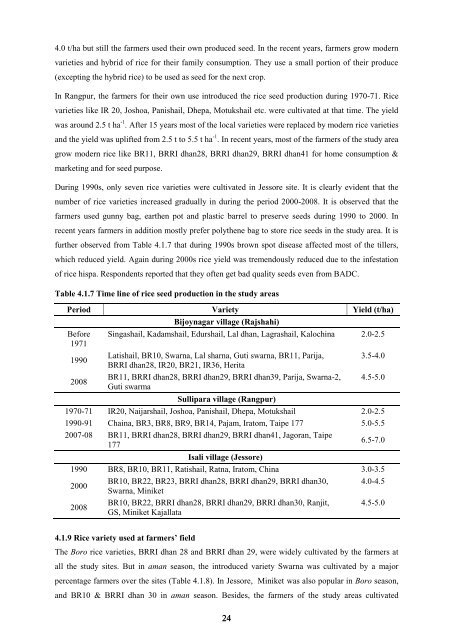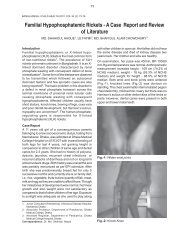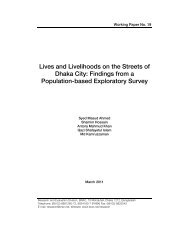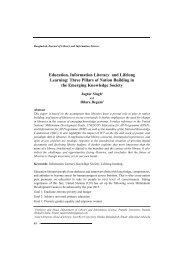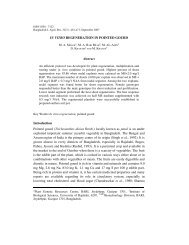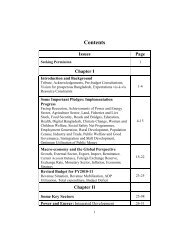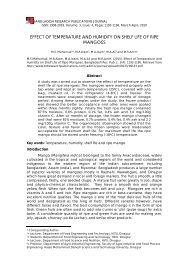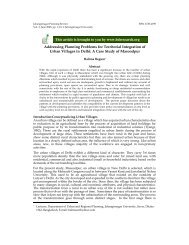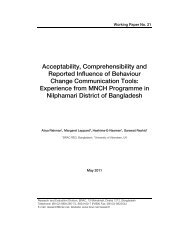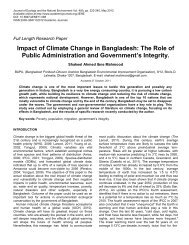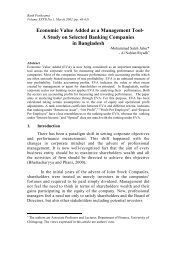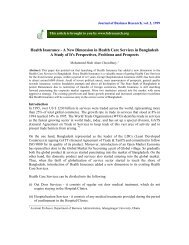Studies on Policy Option for Quality Seed Production and ... - NFPCSP
Studies on Policy Option for Quality Seed Production and ... - NFPCSP
Studies on Policy Option for Quality Seed Production and ... - NFPCSP
Create successful ePaper yourself
Turn your PDF publications into a flip-book with our unique Google optimized e-Paper software.
4.0 t/ha but still the farmers used their own produced seed. In the recent years, farmers grow modernvarieties <strong>and</strong> hybrid of rice <strong>for</strong> their family c<strong>on</strong>sumpti<strong>on</strong>. They use a small porti<strong>on</strong> of their produce(excepting the hybrid rice) to be used as seed <strong>for</strong> the next crop.In Rangpur, the farmers <strong>for</strong> their own use introduced the rice seed producti<strong>on</strong> during 1970-71. Ricevarieties like IR 20, Joshoa, Panishail, Dhepa, Motukshail etc. were cultivated at that time. The yieldwas around 2.5 t ha -1 . After 15 years most of the local varieties were replaced by modern rice varieties<strong>and</strong> the yield was uplifted from 2.5 t to 5.5 t ha -1 . In recent years, most of the farmers of the study areagrow modern rice like BR11, BRRI dhan28, BRRI dhan29, BRRI dhan41 <strong>for</strong> home c<strong>on</strong>sumpti<strong>on</strong> &marketing <strong>and</strong> <strong>for</strong> seed purpose.During 1990s, <strong>on</strong>ly seven rice varieties were cultivated in Jessore site. It is clearly evident that thenumber of rice varieties increased gradually in during the period 2000-2008. It is observed that thefarmers used gunny bag, earthen pot <strong>and</strong> plastic barrel to preserve seeds during 1990 to 2000. Inrecent years farmers in additi<strong>on</strong> mostly prefer polythene bag to store rice seeds in the study area. It isfurther observed from Table 4.1.7 that during 1990s brown spot disease affected most of the tillers,which reduced yield. Again during 2000s rice yield was tremendously reduced due to the infestati<strong>on</strong>of rice hispa. Resp<strong>on</strong>dents reported that they often get bad quality seeds even from BADC.Table 4.1.7 Time line of rice seed producti<strong>on</strong> in the study areasPeriod Variety Yield (t/ha)Be<strong>for</strong>e197119902008Bijoynagar village (Rajshahi)Singashail, Kadamshail, Edurshail, Lal dhan, Lagrashail, Kalochina 2.0-2.5Latishail, BR10, Swarna, Lal sharna, Guti swarna, BR11, Parija,BRRI dhan28, IR20, BR21, IR36, HeritaBR11, BRRI dhan28, BRRI dhan29, BRRI dhan39, Parija, Swarna-2,Guti swarmaSullipara village (Rangpur)3.5-4.04.5-5.01970-71 IR20, Naijarshail, Joshoa, Panishail, Dhepa, Motukshail 2.0-2.51990-91 Chaina, BR3, BR8, BR9, BR14, Pajam, Iratom, Taipe 177 5.0-5.52007-08 BR11, BRRI dhan28, BRRI dhan29, BRRI dhan41, Jagoran, Taipe1776.5-7.0Isali village (Jessore)1990 BR8, BR10, BR11, Ratishail, Ratna, Iratom, China 3.0-3.52000BR10, BR22, BR23, BRRI dhan28, BRRI dhan29, BRRI dhan30, 4.0-4.5Swarna, Miniket2008BR10, BR22, BRRI dhan28, BRRI dhan29, BRRI dhan30, Ranjit, 4.5-5.0GS, Miniket Kajallata4.1.9 Rice variety used at farmers’ fieldThe Boro rice varieties, BRRI dhan 28 <strong>and</strong> BRRI dhan 29, were widely cultivated by the farmers atall the study sites. But in aman seas<strong>on</strong>, the introduced variety Swarna was cultivated by a majorpercentage farmers over the sites (Table 4.1.8). In Jessore, Miniket was also popular in Boro seas<strong>on</strong>,<strong>and</strong> BR10 & BRRI dhan 30 in aman seas<strong>on</strong>. Besides, the farmers of the study areas cultivated24


